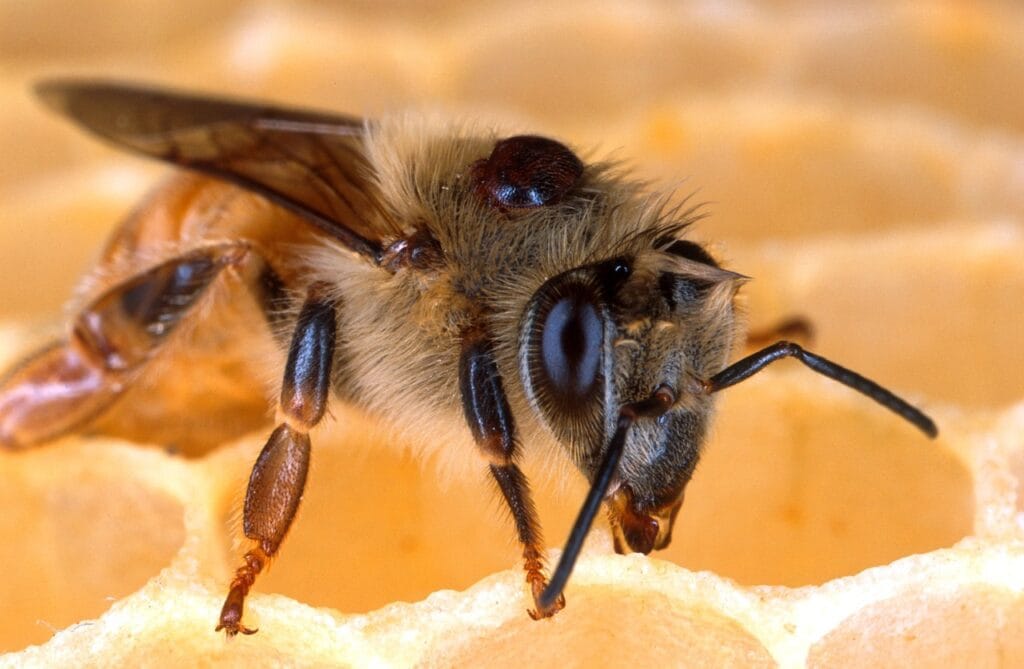To interpret Randy Oliver’s amino acid ratios in his calculator:
- Key Concept: The calculator compares the essential amino acid (EAA) profile of your bee diet or pollen substitute to established nutritional benchmarks.
- Columns:
- Gray columns: Show the classic de Groot recommendations for ideal EAA ratios based on “perfect” bee nutrition research.
- Red columns: Reflect Oliver’s revised targets, which are updated based on recent research and trial results.
- Green columns: Represent your own formula’s amino acid profile (the numbers you input).
How to Read the Ratios
- If your green column (your formula) is equal to or taller than the corresponding gray/red column, that EAA is present at sufficient levels compared to leucine and is well balanced.
- If your green column is shorter than the gray/red column, your formula is deficient in that specific EAA, meaning bees may not be able to fully utilize all the protein you provided.
- The calculator identifies which amino acids are limiting—and allows you to adjust your formula or directly add specific EAA concentrates to meet the targets, instantly updating the chart.[1]
Summary Table
| Column Color | What It Represents | Interpretation |
| Gray | de Groot recommendation | Traditional target ratio |
| Red | Oliver’s revised target | Updated, research-driven ratio |
| Green | Your diet | Actual EAA content in your recipe |
Key Takeaways:
- Match your formula’s green columns to the height of the gray/red columns for each EAA to ensure balanced nutrition.
- Any shortfall signals what needs correction—adjust ingredient amounts or add specific EAA powders until you achieve a balanced profile.[1]
This method helps maximize bee health, colony strength, and feed efficiency by aligning your pollen substitute’s amino acid ratios with proven nutritional benchmarks.[1]
⁂



